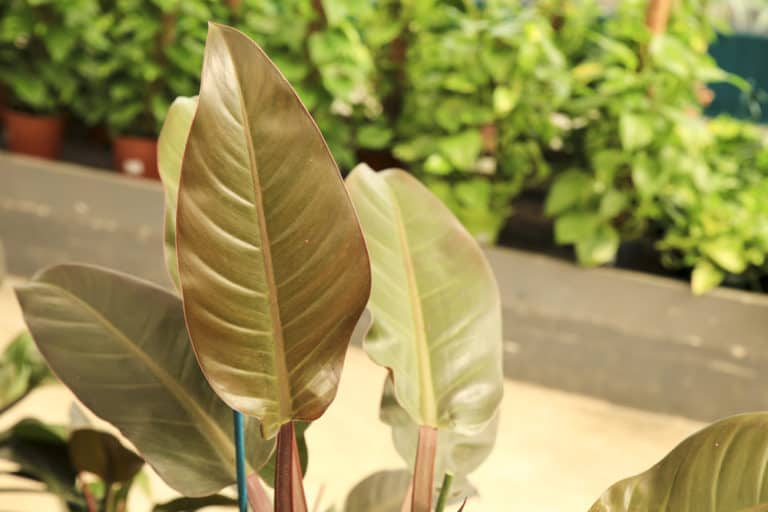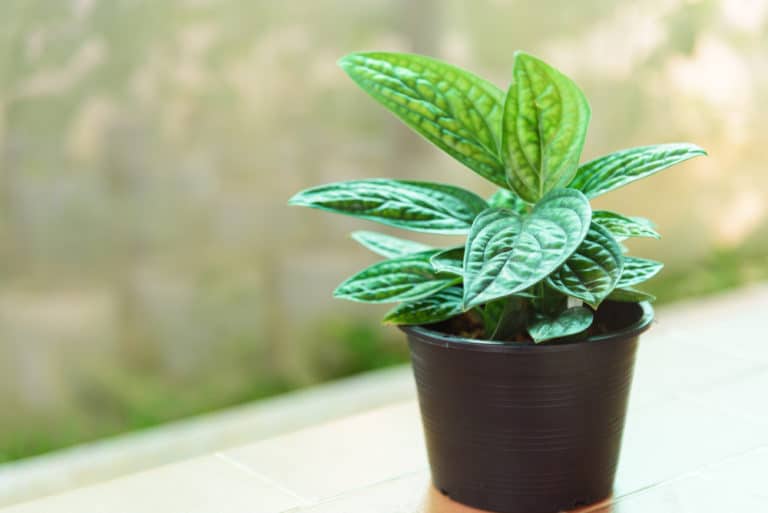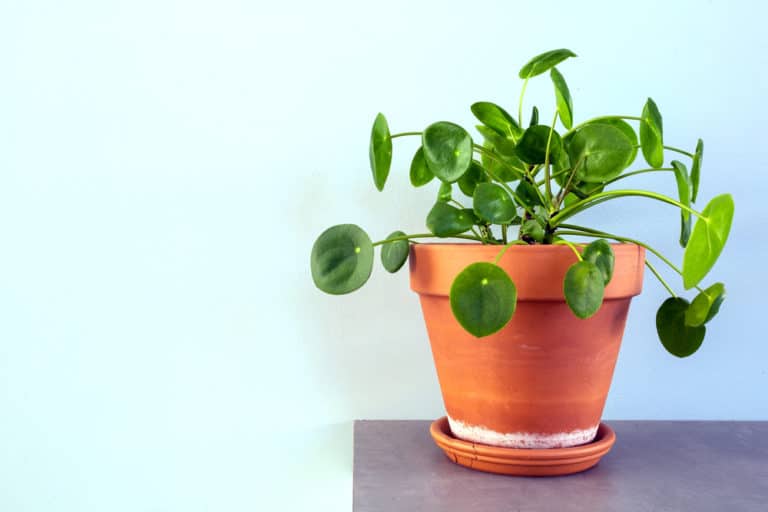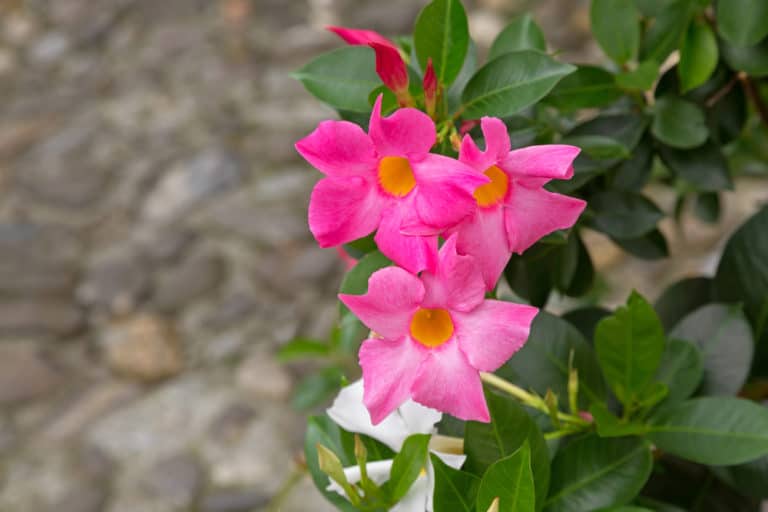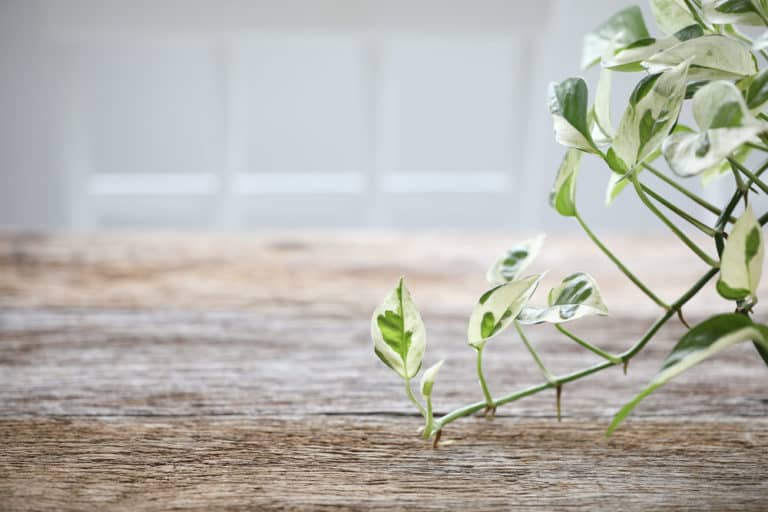Monstera Adansonii ‘Laniata’ Care Guide (2024)
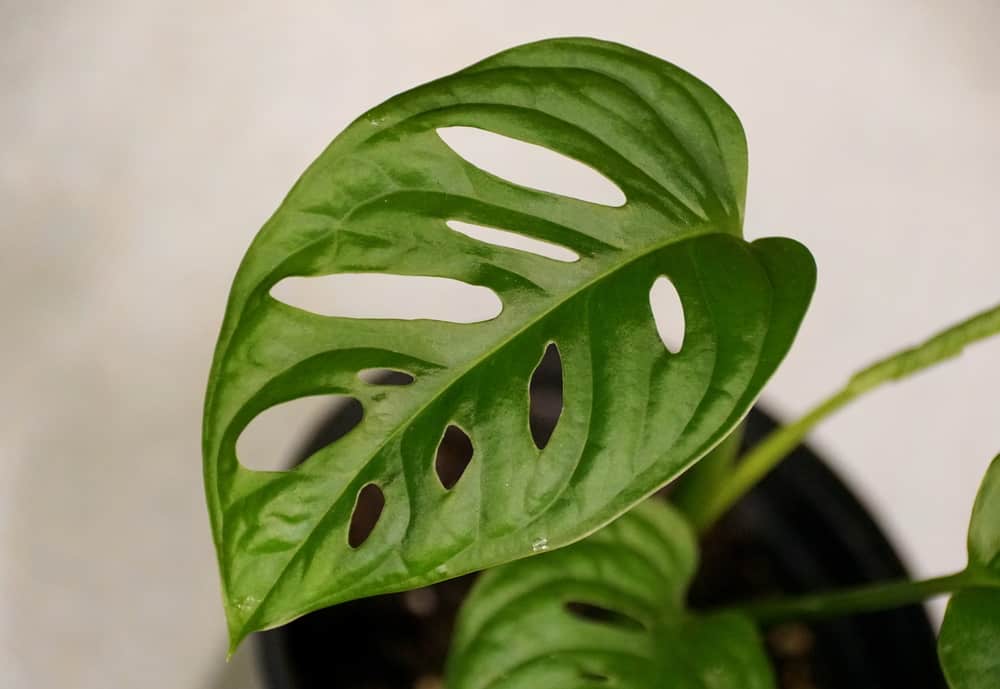
Monstera Laniata is a truly magnificent foliage plant that will naturally become a focal point of your indoor garden.
Its huge, glossy leaves have distinctive oval holes that give it its common name Swiss Cheese Plant.
Yet even with its spectacular appearance, Monstera adansonii Laniata is still a low-maintenance houseplant!
| Scientific Name | Monstera adansonii ssp. laniata ‘Large Form’ |
| Common Name | Swiss Cheese Plant, Monstera Plant |
| Light | Partial shade |
| Watering | Weekly, water if the top half of the soil is dry |
| Temperature | 61-82°F (16-28°C) |
| Hardiness Zone | 10b, 11a, 11b, 12 |
| Humidity | 60-90% |
| Soil Type | Well-draining, nutrient-rich |
| Soil pH | slightly acid to neutral soils (pH 5 to 7.5) |
| Fertilizing | A balanced feed once a month in spring and summer |
| Repotting | Every 2 years |
| Pruning | During the growing season |
| Propagation | Root in water or soil |
| Toxicity | Toxic to humans and pets |
| Mature Size | 4-12 feet as a houseplant |
| Bloom Time | Rarely |
What’s Unique About Monstera Laniata?
Native to the tropical regions of South and Central America, Monstera Laniata plants are guaranteed to bring a feel of the tropics to your indoor garden.
The Monstera Laniata plant is notable for its large, glossy leaves that can grow up to 2 feet in length, with many oval holes to create a dramatic appearance.
It’s also one of the larger plants that can be grown indoors, reaching a mature height of up to 8 feet.
Adding this rare southern beauty to your collection of houseplants will make you feel like you’re in the jungle right in your own home.
Monstera Laniata Care
Growing Monstera Laniata isn’t difficult if you pay attention to the basics.
Monstera Laniata plant care is pretty straightforward and similar to that for other tropical plants.
Give it warm, humid conditions, water sparingly, and keep it out of direct sunlight.
With those simple guidelines for Monstera adansonii Laniata care, this beautiful giant should thrive.
Light
In the tropical rainforests where it originates, Monstera Laniata grows beneath the dense canopy of trees.
Thus, Monstera Laniata light requirements are partial shade with very filtered sunlight, or between 10,000-15,000 lux.
You can meet the Monstera adansonii Laniata light needs by placing it near a north or east-facing window, or a shady spot in a south or west-facing room.
Rotate the pot once a week, a quarter turn at a time, so that all sides of the plant receive adequate light.
Keep it out of full sun at all times, as too much sun exposure can burn its magnificent leaves.
Watering
In its native rainforests, Monstera Laniata is used to soil that is moist but not sopping wet, so you need to replicate these watering needs for your houseplant.
Water Monstera adansonii Laniata when the top half of the soil is dry.
For Monstera Laniata watering, use a watering can to fill the pot to the top, and let the excess run out the bottom. Remove the standing water so that the soil will not stay too wet.
If the soil has dried out too much before watering, you may need to do this 2 or 3 times, as water will run right through too-dry soil.
Temperature
The Monstera Laniata temperature range is definitely on the high side, as you would expect for a tropical plant.
The best temperature for Monstera adansonii Laniata is 61-82°F (16-28°C). Most homes, even in cold climates, can easily provide enough heat at the lower range.
In fact, Monstera Laniata might be more susceptible to too-cold temperatures in hot weather if it is too close to the source of air-conditioned air.
In growing zones 10b-12 Monstera Laniata can be grown outside year-round, or it can be brought outside in summer in temperate climates.
Be careful, though, because they have limited temperature tolerance below 50°F (10°C), and they have no frost hardiness.
Humidity
These rainforest natives love a humid atmosphere, and so you should strive to provide a high humidity level for your Monstera Laniata.
The ideal humidity for Monstera adansonii Laniata is 60-90%, which is higher than you will want to maintain throughout your home.
You can, however, meet the Monstera Laniata humidity requirements in a few different ways.
If you have several plants with similar humidity needs, you could group them together close to a small humidifier, or place them on a large pebbled tray filled with water.
Most easily, you can mist the leaves several times a week. Use distilled water to avoid the buildup of mineral salts on the leaves.
Soil
Monstera Laniata soil must be nutrient-rich but well-draining, because overly wet soil can damage or kill this plant.
The best pH level for Monstera adansonii Laniata is slightly acid to neutral (pH 5 to 7.5).
You can buy a tropical plant soil mix, or make your own soil for Monstera adansonii Laniata by combining equal parts of perlite, bark, sand, loam, and compost.
If you can’t find all of those, use a simpler mix of half peat moss and half potting soil.
Coco fiber is a more ecologically friendly alternative to peat moss and can be substituted in equal proportions.
Fertilizer
To ensure rapid, healthy growth and large leaves you will need to use fertilizer for Monstera adansonii Laniata.
You can use any standard indoor plant food as your Monstera Laniata fertilizer. Use a balanced fertilizer ratio such as 10-10-10.
If you use a liquid fertilizer, dilute it with water before applying to ensure even distribution to the roots. Do not apply it when the soil is dry, as it may just run out the bottom and be wasted.
Apply liquid fertilizer once a month in spring and summer.
You can also incorporate slow-release fertilizer granules in the soil, and they should last you the entire season.
Potting & Repotting
Repotting Monstera adansonii Laniata only needs to be done when you see roots growing out of the drainage holes. Expect Monstera Laniata repotting to be necessary every one or two years.
When potting on a rootbound Monstera Laniata, do not increase the pot size too much. Go up no more than 2 inches in diameter.
It is essential that your new pot has drainage holes, as sitting in wet soil can kill a Monstera Laniata plant.
Add fresh potting soil to the new pot, leaving room for the root ball, and settle your Monstera Laniata at the same depth as in its previous pot. Give it a good watering and let the excess water drain out.
Pruning
The fast-growing nature of Monstera Laniata can get out of control. Luckily, cutting Monstera adansonii Laniata can be done without damaging the plant.
The first rule of Monstera Laniata pruning is that you should remove any dead, dying, or damaged leaves whenever you notice them. Leaving them on will detract from the lush appearance of Monstera Laniata.
If it’s growing too much for you, you can trim it during its growing season in spring and summer. In its dormant period, only remove damaged or dead leaves.
You can cut out stems that are growing out of your desired shape, using a sharp knife or scissors.
Propagation
Monstera Laniata propagation is easy.
Cut stems at least 6 inches long, with a minimum of 2 nodes and cut just below a node using a sharp knife or scissors. It’s even better if there’s an aerial root attached. Remove all but the top 1 or 2 leaves.
To propagate Monstera adansonii Laniata in water, simply place the stems in a jar and place in a warm spot out of direct light. Change the water every few days
For soil propagation, make holes in a fresh container of potting soil and plant 2 nodes deep. Keep them moist and warm.
After a month or so, the cuttings should develop roots 2-4 inches long. Plant them out in pots
Also, make sure to check out our in-depth Monstera peru plant care guide.
Common Problems of Monstera Laniata
Problems with Monstera adansonii Laniata can arise when you do not pay enough attention to its cultivation requirements.
When you start to see damage to its leaves, you need to determine if it’s insects, disease, or just watering and light issues causing it.
Luckily, most Monstera Laniata problems can easily be cured.
Pests
Monstera adansonii Laniata can be affected by bugs, so it’s important to be on the lookout for infestations.
Thrips are small brown winged insects, with white larvae. They leave brown or white spots on the leaves.
Mealybugs look like tiny tufts of cotton on the underside of leaves and can leave trails of a sticky substance where they have been sucking sap.
Spider mites are tiny spiders that leave little white or yellow dots across the leaves.
Use a spray of diluted neem oil or insecticidal soap to eliminate most Monstera Laniata pests. It’s important to cover all surfaces of the plant, including the underside of the leaves where many bugs lurk.
Diseases
Most Monstera Laniata diseases are the result of overwatering.
If your Monstera adansonii Laniata develops damp spots that turn black, you have a fungus called leaf spot disease that can happen in very humid conditions. You can prevent this from developing by only watering the soil and not the leaves, but if it does occur, cut out all affected foliage.
Root rot can also develop in wet conditions, with leaves turning yellow or black. Save your Monstera Laniata by removing it from its pot, cutting out the affected roots, and repotting. Use a pot with drainage holes in a loose, well-draining soil, and decrease watering frequency.
Growing Problems
Monstera Laniata can have growing problems if you have not paid attention to the ideal conditions under which it will thrive.
The good news is that if you can identify why you have a sick plant, you should be able to return it to health by providing it with an improved growing environment.
If the leaves start turning brown, they may not be getting enough light. Move your Monstera Laniata to a brighter spot, still out of full sun, and make sure you’re not watering too frequently.
Crispy leaves mean your Monstera Laniata is getting burned from too much sun. Move it into a shadier spot.
Toxicity of Monstera Laniata
Monstera adansonii Laniata is toxic to humans and animals.
All parts of the plant contain calcium oxalates that can harm people and pets.
Ingesting Monstera Laniata leaves or stems is unlikely to be fatal, but its toxicity can cause serious reactions, especially in children and pets.
For Humans
Monstera Laniata is toxic to humans, but is unlikely to cause serious problems in adults.
You might develop a skin irritation after exposure to the sap, but if you rinse your skin with water and soap, you shouldn’t have any problems.
Young children might get curious and try a bite of a Monstera Laniata leaf. If they do, watch them closely to see if they develop any swelling of the mouth or tongue.
For mild exposures, it’s probably enough to wash any plant material off of their mouth and give them something soothing to eat, like a popsicle.
If they have any difficulty breathing take them for immediate medical care.
For Pets
Pets are pretty notorious for eating things they shouldn’t, and some can’t resist a leafy plant.
Cats, dogs, rabbits, and other small household pets are equally susceptible.
If your pet starts drooling or vomiting, or has a swollen mouth and tongue, and you suspect ingestion of Monstera Laniata, you should consult your veterinarian. You may need to take your pet in for treatment.
To prevent this from occurring, find a spot for your Monstera Laniata where the small members of your household won’t be able to reach it, like on a high shelf or in a hanging planter where you can train the vines to be inaccessible.
Monstera Laniata Appearance
The Monstera Laniata appearance is a dramatic one. Its huge, fenestrated leaves and extensive vining habit will make it a dominant plant in your indoor garden.
There is one variegated form of Monstera Laniata, Monstera adansonii Laniata ‘Variegated’. Its fenestrated leaves have irregular white patches that sometimes cover most of the surface.
Foliage
The striking foliage of Monstera Laniata is what makes it such a desirable houseplant.
The huge, glossy green leaves have a leathery texture and feature multiple large oval holes (or fenestrations), giving it the common name Swiss Cheese Plant.
The young leaves have few to no holes; that distinctive feature develops as they mature, and they are distributed randomly across the leaves. Sometimes there seems to be more hole than leaf.
Each leaf can grow up to 2 feet in length and a foot across under ideal conditions. When they mature they broaden so that they are wider than they are long.
Flowering
You are not likely to see a Monstera adansonii Laniata flower in your home, as only mature plants will bloom.
However, if you are gardening in a tropical region and can let your Monstera Laniata grow to a large size as it would in its native rainforest, Monstera Laniata flowering is possible.
When a Monstera Laniata is blooming, you will see erect stems holding aloft a flower composed of a creamy white spathe wrapped around a pale yellow spadix. Each flower is up to a foot tall.
For most gardeners, it’s best to expect foliage without flowers, but the leaves of Monstera Laniata are so striking that you will not miss the blooms.
Size and Growth
The size of Monstera Laniata is one of the attractions for indoor gardeners looking for a big and splashy houseplant.
This tropical beauty has a fairly quick growth rate, reaching a full size indoors of 4-8 feet with a spread of 1-2 feet, depending on how much you trim.
Outdoors in a tropical zone your Monstera Laniata may grow to 12-15 feet.
Monstera Laniata is a vining plant that will grow well when trained up a sphagnum pole for its aerial roots to cling to. Outdoors you can encourage it to grow up tree trunks and limbs as it does in its native rainforest.
Monstera Laniata Fragrance
There is little recorded about Monstera Laniata fragrance.
Since it rarely, if ever, flowers when grown as a potted plant indoors, and the leaves have no scent, it should be treated as a non-scented plant.
This is an advantage in settings where fragrance is discouraged because of some people’s sensitivity to strong scents, such as health care facilities.
In an indoor garden, you can combine different plants to highlight their different appeals. Pairing Monstera Laniata’s spectacular display of leaves with a flowering plant that has an attractive scent, such as a camellia, can give you the best of both plants.
Suggested Uses for Monstera Laniata
Wherever you use Monstera Laniata, this plant is going to be a dominant feature because of its size and the dramatic appearance of the fenestrated leaves.
Like most leafy house plants it’s also an effective air purifier, so it can help improve your air quality as well.
Indoors, a Monstera Laniata plant can be trained up a sphagnum moss pole and will easily grow to ceiling height, perfect to fill in a shady corner of a living room.
It can also be grown in a hanging basket, letting the vines spill down as far as you want.
Outdoors in a tropical climate, you can plant it under larger trees where it will benefit from the shade and support they provide.
FAQ
What is Monstera Laniata?
Monstera Laniata is a tropical perennial plant native to the rainforests of Central and South America, notable for its large, fenestrated leaves and vining habit.
How to identify Monstera Laniata?
Monstera Laniata has large, glossy green leaves up to 2 feet long with large, irregular holes across the entire surface. It is a vining plant.
How to care for Monstera Laniata?
Grow your Monstera Laniata in porous, well-draining soil. Water the soil sparingly and fertilize monthly. Keep it out of the direct sun in warm, humid conditions.
How to grow Monstera Laniata indoors?
Monstera Laniata grows best in a north or east-facing window at temperatures between 61-82°F (16-28°C) and in humidity from 60-90%. Water only when the soil is dry.
How to grow Monstera Laniata outdoors?
Monstera Laniata can be grown outside year-round in climate zones 10b-12. Plant the vines under large trees for shade and support as the vines grow.
How fast does Monstera Laniata grow?
Monstera Laniata grows at a moderately fast rate under ideal conditions, outgrowing its pot within 1 to 2 years. It can be expected to reach its full indoor size within a year.
How tall does Monstera Laniata grow?
As an indoor houseplant, Monstera Laniata can be expected to reach a full height of between 4-8 feet. As an outdoor plant, it may reach as much as 15 feet.
How to make Monstera Laniata grow faster?
Provide your Monstera Lanita with its ideal growing conditions of consistently warm temperatures, high humidity, monthly feeding, and well-drained soil, in a location away from direct sun.
How to stake Monstera Laniata?
Stake your Monstera Laniata vine with a 6-8 foot sphagnum moss pole that its aerial roots can cling to as it grows. It grows best with support.
How to pot Monstera Laniata?
Pot your Monstera Laniata in a plastic or clay pot with drainage holes, using a loose, porous soil mix that will allow water to drain.
How to revive Monstera Laniata?
If your Monstera Laniata is not thriving, consider moving it to a better location where it will receive filtered light or semi-shade. Water sparingly.
Why is my Monstera Laniata dying?
Your Monstera Laniata may be suffering from a fungal disease as a result of too much water. If the soil is waterlogged, repot it in a well-draining soil mix.
Why is my Monstera Laniata drooping?
If the soil is dried out, water it more frequently. If the soil is too wet, repot your Monstera Laniata in a better draining soil mix.
How cold can Monstera Laniata tolerate?
Monstera Laniata will grow well between 61-82°F (16-28°C). Temperatures below 50°F (10°C) can damage it, and frost will kill it, so bring it inside before temperatures fall.
How to get rid of pests on Monstera Laniata?
Monstera Laniata pests such as thrips, spider mites, and mealybugs can be easily controlled with organic sprays such as diluted neem oil or insecticidal soap.
Is Monstera Laniata toxic to cats?
Yes, Monstera Laniata is toxic to cats. To ensure your pets’ safety, place Monstera Laniata plants on high shelves or in hanging baskets out of reach.
Is Monstera Laniata toxic to dogs?
Yes, Monstera Laniata is toxic to dogs. If your pet starts drooling or vomiting, or has a swollen mouth and tongue, consult your veterinarian for help.
Is Monstera Laniata toxic to children?
Yes, Monstera Laniata is toxic to children. If your child has eaten some foliage and has a swollen mouth or tongue, phone poison control or take them to the emergency room.
Is Monstera Laniata toxic to humans?
Yes, Monstera Laniata is toxic to humans. If the sap gets on your skin, rinse it with soap and water and use antihistamine creams for any rash.
Does Monstera Laniata have a scent?
The foliage of Monstera Laniata does not have a scent. The flowers may be scented, but it is extremely rare for an indoor Monstera Laniata to bloom.


